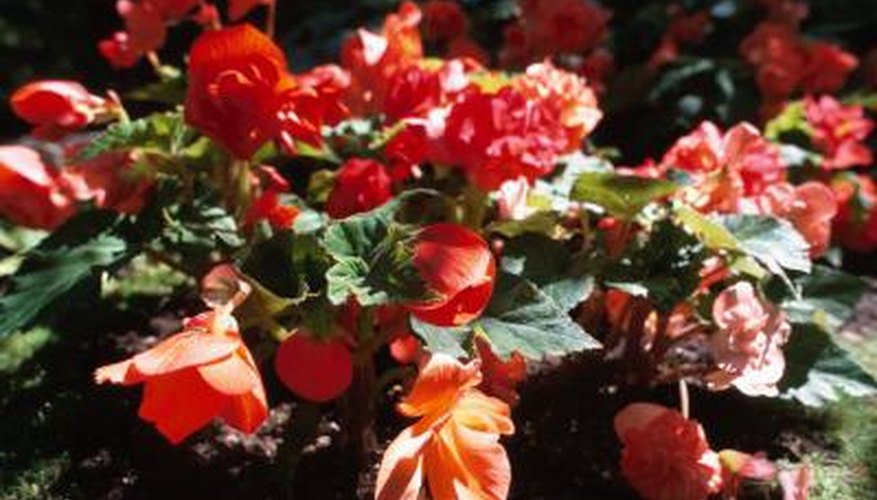Begonias (Begonia spp.) grow as perennials and annuals. The are known for their waxy clusters of flowers in shades of orange, pink, red and yellow. Begonias are planted both in the ground and in pots and thrive in indirect, bright light. A fungal disease causes begonia leaves to start wilting.
Identification
Begonias are susceptible to botrytis blight caused by Botrytis cinerea. The disease is also called grey mould. The fungal growth is more pronounced in cool, wet or humid weather. Botrytis blight affects all parts of the plant, including the leaves.
- Begonias are susceptible to botrytis blight caused by Botrytis cinerea.
- The fungal growth is more pronounced in cool, wet or humid weather.
Damage
The disease is characterised by the appearance of spots on foliage and flowers. Affected plants become discoloured and buds and leaves rot. Foliage wilts and drops. The spots develop indicative grey-to-brown coloured spore masses. As the disease progresses, there is twig dieback and buds do not open.
- The disease is characterised by the appearance of spots on foliage and flowers.
- As the disease progresses, there is twig dieback and buds do not open.
Management
Remove and discard all infected plant areas. If plants are affected at the base, entirely remove the plant. Avoid overhead watering to minimise moisture on foliage and flowers, as this encourages fungal growth. Fungicidal control options include neem oil, Bacillus subitlis or chlorothalonil.
- Remove and discard all infected plant areas.
- Avoid overhead watering to minimise moisture on foliage and flowers, as this encourages fungal growth.
